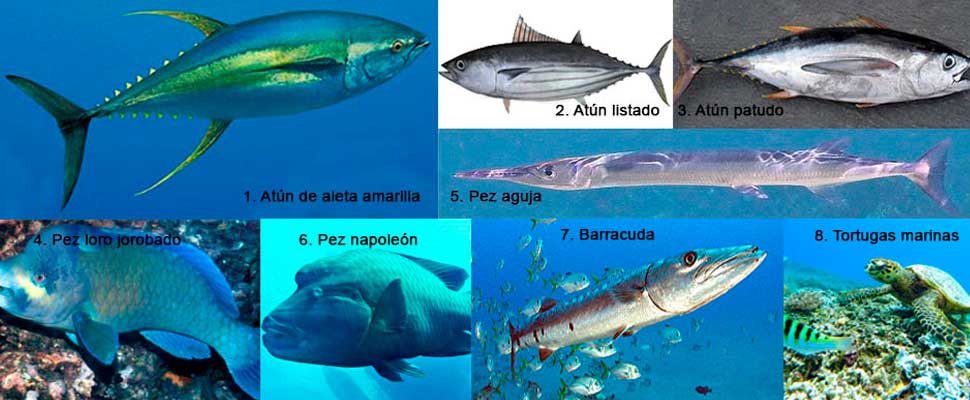The most threatened species in the Coral Triangle: will we no longer have tuna sushi?
More than 120 million people who survive directly from the food and safety provided by these reefs

The Coral Triangle is a tropical maritime area located in the Pacific, in the convergence of Southeast Asia and Oceania, that includes waters of 6 countries: Indonesia, Malaysia, New Guinea, Philippine Islands, Solomon Islands, and Timor Leste, has an extensive number of seagrasses and mangroves that makes it the holder of the title of the area with the greatest marine biodiversity in the world, since it houses 76% of the coral species that are known, six of the seven species of marine turtles registered, and more than 2 thousand species of reef fish. The triangle covers 6 million square kilometers and has a population of more than 120 million people who survive directly from the food and safety it provides them.
Leer en español: Las especies más amenazadas del Triángulo de Coral: ¿dejará de haber sushi de atún?
The species that are most endangered in this area are:
1. Yellowfin tuna: Also known as yellowfin tuna, it is one of the largest tuna species in the world, its size generally depends on where they live and the food resources they count on. Its body is shaped like a torpedo so you can move very quickly for long periods of time; They have yellow and blue colors that help them mix well with their environment.
2. Tuna skipjack: It is an elongated and robust fish, its back is dark blue and its sides and belly are silver, which makes it easily camouflaged from predators.
3. Bigeye tuna: It is a medium-sized species of fish, it is characterized by having a very robust body and large eyes, lives in warm and warm waters and its ability to maintain body temperature within limits regardless of the environmental temperature. It allows you to explore the deepest places of the water.
4. Humpback Parrotfish: It is a species of marine fish called "parrot" because its numerous teeth are grouped in a compact package fused IGNORE INTO a structure that resembles the beak of parrots. Among the features that make it unique are:
- Their diet consists essentially of algae that they extract from the pieces of coral that are detached from the reefs and that when expelled become sand.
- They change sex repeatedly and their colors and drawings make it very difficult to classify them.
- At night, some species are covered with a transparent cocoon made of a mucous that they secrete from an organ of the head.
5. Needlefish: It is possibly one of the slowest fish of the ocean, to mobilize it uses its pectoral fins that can vibrate up to 35 times per second; the needlefish replaces the speed of an attack with a great suction power of millimeter accuracy when capturing its prey.
6. Napoleon Fish: It is also known as "Hump Head", because it has a hump just above the eyes; It is distinguished by having thick and fleshy lips that absorb the stinging substances of its spicy food. The males have colors that go from an electric blue to a sea green or a purple one, with wavy lines in the head and the front of the body and the females have colors in opaque shades of gray, red, or brown.
7. Barracuda: It is a large species of fish, its appearance is elongated, like its head, its jaws contain rows of pointed teeth used to eat larger prey. It is an aggressive and dominant predator that attacks its prey with great rapidity.
8. Sea turtles: In the coral triangle live six of the seven species of sea turtles known, these move smoothly in the water, have no teeth, and their shell is joined on both sides, which allows them to protect themselves from danger and from the stalking of other animals.
Latin American Post | Andrea del Pilar Rojas Riaño
Copy edited by Latin American Post





